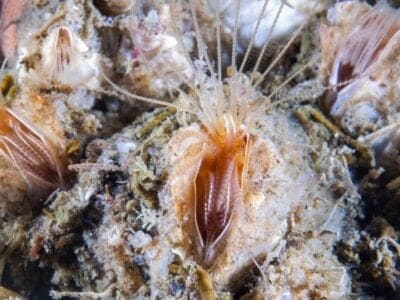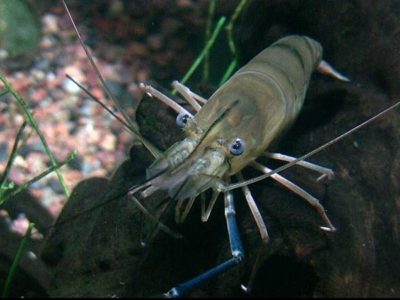Crustaceans are a large, diverse group of invertebrates of the phylum Arthropoda, whose classification also includes spiders, mites, scorpions and insects.
Scientists believe that the number of crustacean species worldwide is between 50,000 and 67,000. Most crustaceans live exclusively in water, with most in salty environments, although a smaller percentage are found in freshwater. Several groups, such as hermit crabs, terrestrial crabs and woodlice, live on land yet require a humid climate to survive.
Most are also motile, but a few, like barnacles, live in a fixed position. They are distinct from other arthropods by their two-parted limbs and by their larval forms. Most definitions of crustaceans and hexapods, consisting of insects and related invertebrates, consider them to be sister groups.
The 6 Common Characteristics of Crustaceans Explained
Even though this animal classification is extremely diverse, all crustaceans have common characteristics, although the forms for some species may be hard to distinguish. All crustaceans share these six physical similarities.
1. Symmetrical Body Structure and Exoskeleton
Crustaceans have symmetrical bodies covered by an exoskeleton that may be thick and hard or delicate and transparent, depending on the species. Adults have segmented bodies with a head, thorax and abdomen, and jointed legs. The legs are jointed and feature adaptations for swimming, walking, etc. The first pair of appendages in some species are claws or pincers. Appendages and their form change their look and function during the creature’s lifecycle. The beating of the appendages creates a flow of water over the gills to aid respiration. Most larger crustaceans have a head and thorax fused into a single unit. The head has two pairs of antennae, one median eye and two lateral eyes and three pairs of biting mouthparts.
2. Crustaceans Have A Carapace
This structure is the hard shell covering the top of most crustaceans. The head and the thorax are fused in most species.
3. Molting
To grow, all crustaceans must periodically cast off their exoskeleton. The exoskeleton underneath is temporarily soft immediately following the mot, leaving the animal vulnerable to predation and cannibalism. Exoskeleton markings on many species are unique and retained through each molt.
4. Open Circulatory System
Crustacean blood is not contained within vessels as it is in mammals but is open and drawn to the heart through holes called ostia. The heart pumps it out again to circulate through body tissues.
5. Compound Eyes
This characteristic is one of the most conspicuous as crustaceans have eyes similar to flies and other insects. For example, decapods have hundreds of smaller eyes radiating from the end of an optic nerve. Copepods only have a median eye, but this sight organ is also compound.
6. Nervous System
The nervous system consists of a rudimentary brain connected to a nerve cord of ganglia. Often, crustaceans will have a long chain of ganglia, but those with shorter bodies have ganglia that can fuse into a single mass.
Crustacean Reproduction, Eggs and Larvae
Reproduction is sexual. The majority of species have separate sexes, although a few, such as barnacles, are hermaphrodites and assume one sex for reproduction. In some species, females brood their eggs beneath their abdominal segments. Some groups simply release their fertilized eggs into the water, while others attach this to rocks and similar objects. Sexual reproduction usually consists of a sperm fusing with an egg, but some of the lesser-known species are parthenogenetic, meaning that the crustacean produces eggs without fertilization by sperm.
Almost all crustacean species go through an initial larval form called the nauplius, which has three pairs of appendages that emerge from the animal’s head and a singular naupliar eye. Larger decapods, like crabs and lobsters, skip this stage and go to the second larval stage, the zoea, followed by the mysis or the megalopa stage.
In many species, the eggs are brooded beneath the abdominal segments of the female. A few species bypass the larval stages as young emerge from eggs looking like miniature adults.
Crustacean List

Christmas Island Red Crab
During the breeding season, roads can dangerous for cars as well as the crab. Their shells are so hard they can puncture tires.

Coconut Crab
The largest terrestrial arthropod in the world

Crab
There are 93 different crab groups
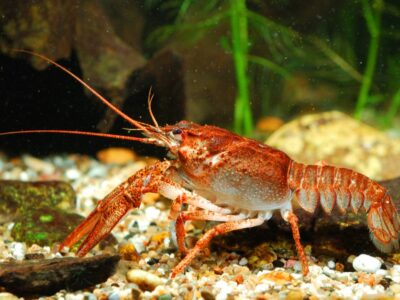
Crayfish
Female crayfish aren't that maternal; they have to secrete a form of pheromone, referred to as maternal pheromones, that encourages them to take care of their offspring and prevents them from eating their young.
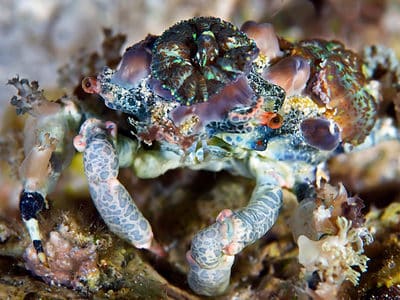
Decorator Crab
Recycle old decorations when they molt
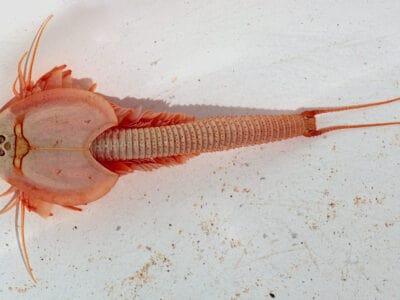
Dinosaur Shrimp
These "shrimp" evolved to survive very harsh climates, which is one reason they have been able to live so long.
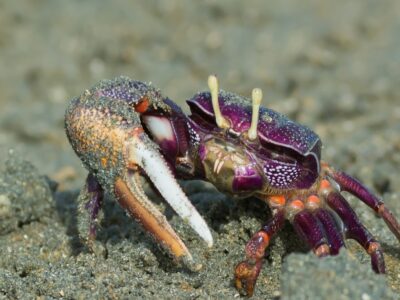
Fiddler Crab
The fiddler crab gets its name from the motion the males make with their over-sized claw during the mating ritual.
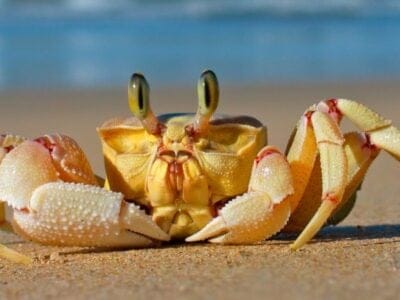
Ghost Crab
Their eyestalks, which are sometimes horned, can swivel 360 degrees
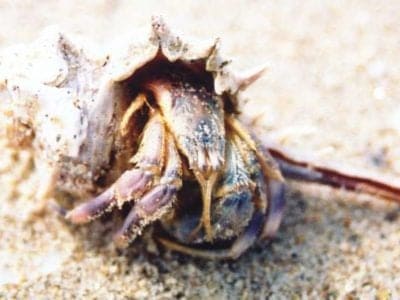
Hermit Crab
There are over 500 different species!

King Crab
Can have a leg span of nearly 2 meters!
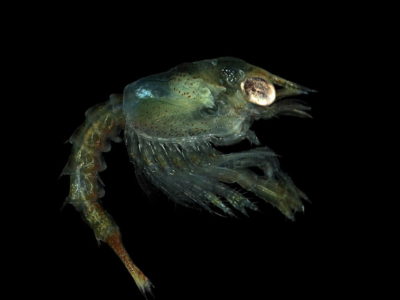
Lobster
Have been known to reach 100 years old!

Ostracod
Oldest and most common extant crustaceans

Oyster
Can process up to 10 litres of water an hour!
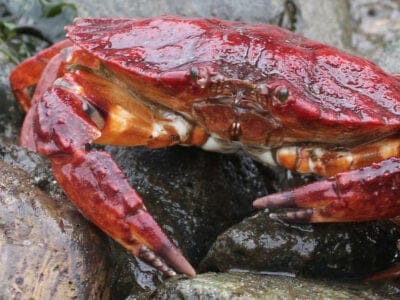
Rock Crab
Males will fight each other to get to females.

Sand Crab
The sand crab burrows beneath the sand with its tail
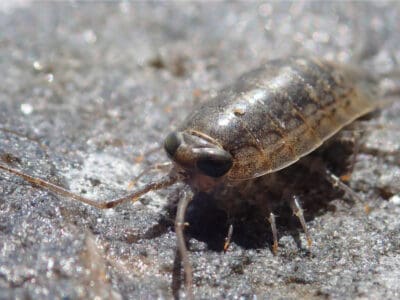
Sea Roach
They breathe through gills but live on land

Stone Crab
Females can lay up to a million eggs in one sitting

Yabby
The yabby can survive long periods of droughts by burrowing into the soil.
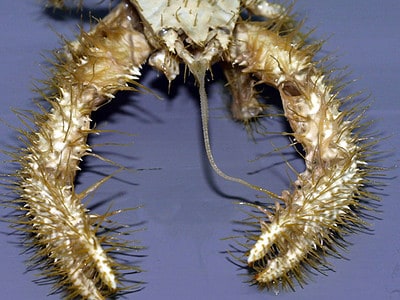
Yeti Crab
The yeti crab has hairy arms, which collect bacteria to feed on
Crustaceans FAQs (Frequently Asked Questions)
What is the definition of a crustacean?
An exact definition of a crustacean remains difficult because of the diversity in this subphylum. However, their general structure is one of the characteristics that define them as a whole. Every crustacean has an exoskeleton, a segmented body, eyes that usually sit atop stalks, four or more pairs of legs, a set of antennae, two pairs of maxillae for chewing and an open circulatory system.
What are the classes of crustaceans?
Taxonomists group crustaceans into five classes: Branchiopoda, Ostracoda, Remipedia, Maxillopoda and Malacostraca. Some taxonomists divide Maxillopoda into two separate classes, Mystacocarida and Branchiura.
Are crustaceans fish?
Seafood includes fish like salmon and shellfish, like lobster or crab. However, only the latter two of those examples are crustaceans.
Which classification of crustaceans are the most well known?
The most well-known crustaceans belong to the Decapod order and are also some of the largest. These include lobsters, crabs, shrimp, prawns and crayfish.
What is the largest crustacean?
The largest crustaceans belong to the order Decapoda. The American lobster can weigh as much as 44 pounds, while the Japanese spider crab has legs that can reach 12 feet.
What is the smallest crustacean?
The smallest crustacean, which is also the smallest arthropod, is tantulocarid Stygotantulus stocki, measuring only 0.0037 of an inch.
Thank you for reading! Have some feedback for us? Contact the AZ Animals editorial team.




